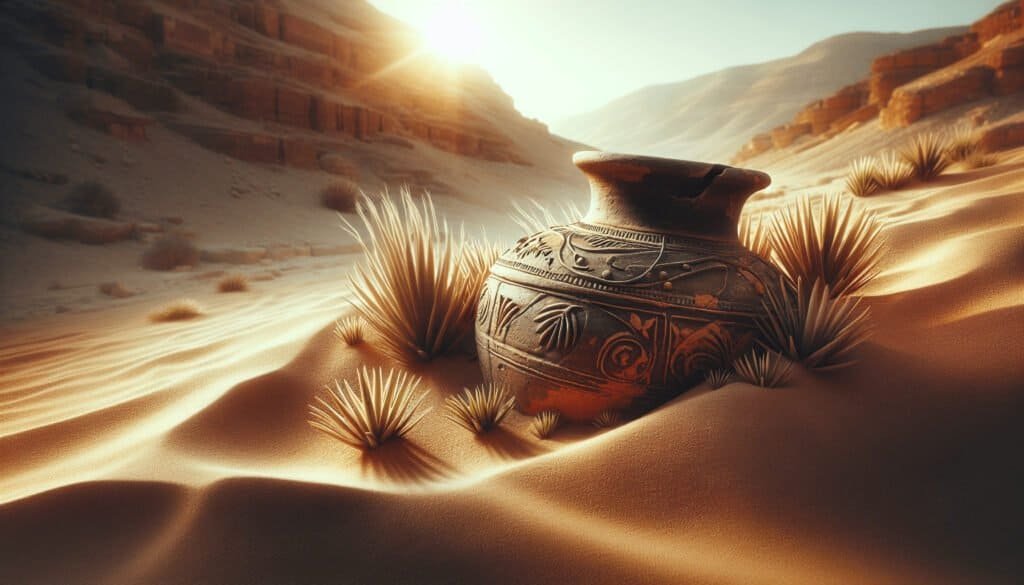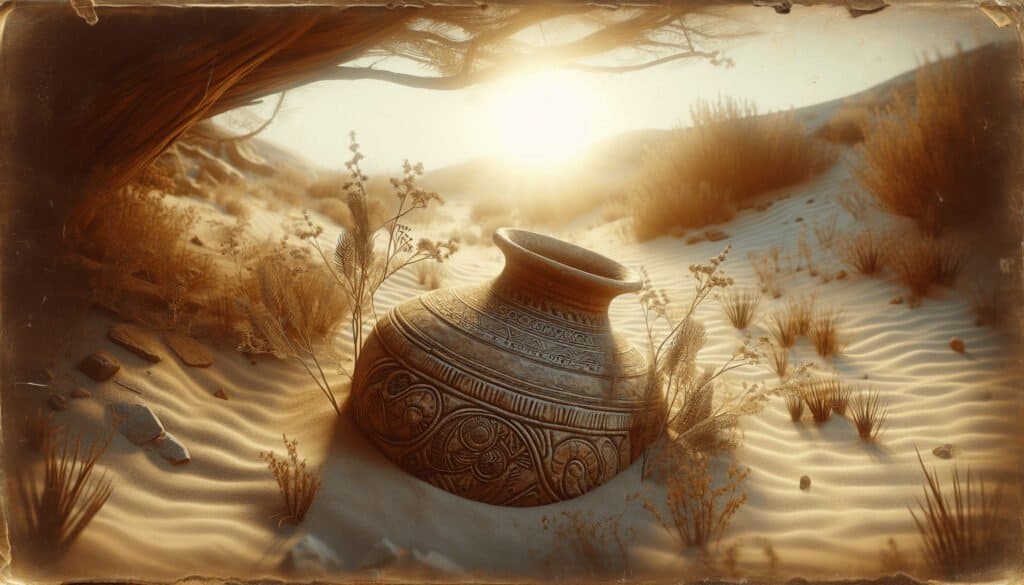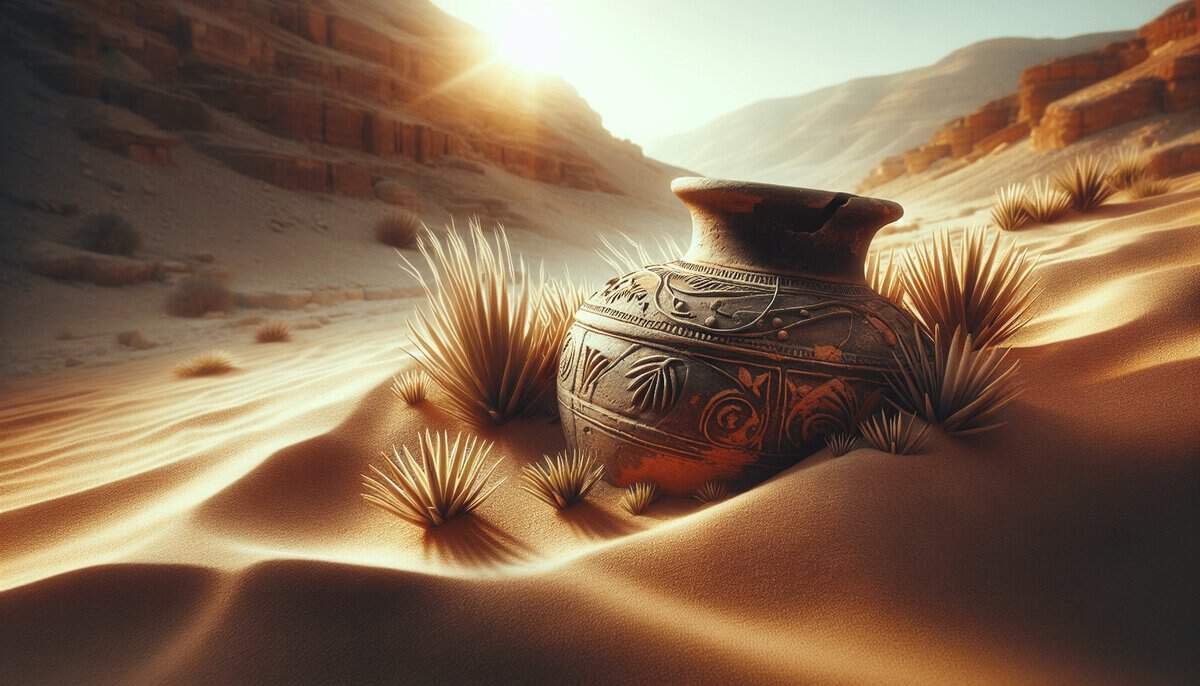Have you ever wondered what tales the ancient ruins of Jericho might tell, especially through something as simple yet profound as a jar? The story of Jericho—a city that holds immense significance in biblical history—is both tragic and remarkable. It reveals the delicate threads of ordinary life, particularly in agricultural practices, intertwined with monumental events. You might be surprised how a single jar can encapsulate lamentations that echo through history.

Jericho: An Overview of the Ancient City
Jericho is often called the “City of Palm Trees,” nestled in the Jordan Valley near the Dead Sea. It’s claimed to be one of the oldest inhabited cities in the world, with a continuous history spanning over 10,000 years. Imagine a world where civilization was just blossoming; Jericho stands as a witness to that phenomenon.
Geographic Importance
Situated near the Jordan River, its location allowed for fertile land ideal for agriculture. The advantages of this terrain helped shape the city’s culture and interactions with neighboring entities. Jericho isn’t merely a place on a map; it’s a crucial player in the history of human development and agriculture.
Archeological Significance
The archaeological findings in Jericho have unearthed fascinating insights into early urban life, trade, and technology. Items such as pottery, tools, and remnants of ancient structures provide a peek into the daily lives of its inhabitants. The ancient walls of Jericho, famously associated with its biblical narrative, speak volumes about the city’s historical resilience.
The Single Jar: A Symbol of Agricultural Lamentations
Let’s turn our attention to the jar, an unassuming object that holds layers of meaning. You might wonder what a jar can tell us about agricultural lamentations, right? As it turns out, this vessel can be a metaphor not only for sustenance but also for the struggles faced by the people who created it.
The Jar in the Agricultural Economy
In ancient societies, jars were essential for storage, trade, and transportation of agricultural products. Think about it; a single jar could hold grains, oil, or wine — all staples of life. Yet, whenever you think of jars, don’t forget that each one tells a unique story of plenty or scarcity. This becomes perhaps even more poignant when we think about agricultural changes over centuries—droughts, floods, and intermittently flourishing periods.
Lamentations: Understanding the Struggles of Jericho’s People
The term “agricultural lamentations” evokes images of mourning over lost crops or failed harvests. You might find it interesting to note that the climate of Jericho has always been a double-edged sword. While the area’s natural resources offered both promise and peril, the very soil that nourished crops could also yield disappointment.
Historical Context
Biblical records and historical documentation have pointed to several years of famine and hardship in the region. The prophet Jeremiah, for instance, laments agricultural decline, mourning for fields that were once fertile. Connecting this to Jericho’s agricultural history, the resonance of those lamentations becomes clear.
Ceramics: The Jar’s Role in Storytelling
The jar itself, often made of clay, represents craftsmanship and artistry in early societies. Ceramics serve not just functional purposes but also engage your imagination. The decorations on these jars provide critical clues about the cultural and social identities of Jericho’s inhabitants.
- Styles of Pottery: Distinctive designs can tell you about trade routes and cultural influences.
- Functionality: The size and shape of jars indicated their specific use—whether for storage, burial items, or ceremonial purposes.
Understanding these facets lends depth to your perspective on how the people of Jericho interacted with their environment and each other.

From Ancient to Modern: The Legacy of Jericho
In tracing the evolution from Jericho’s ancient agricultural practices to modern farming, you find a fascinating narrative. The principles of agriculture have endured, but methods and ideologies have significantly shifted.
Modern Agricultural Practices
Today, as you look at modern farming, you see greater reliance on technology and advanced farming techniques. Yet, the elemental lessons from Jericho’s agricultural history still echo—lessons about sustainability, community reliance, and the intimate bond between people and the land.
Sustainability Focus
Increasing focus on sustainable practices in agriculture today resonates with ancient wisdom. While modern farmers might use advanced techniques to bolster yields, Jericho’s past offered intricate knowledge about crop rotation and local resources.
- Crop Rotation: Ancient civilizations understood the importance of rotating crops to maintain soil health.
- Water Management: Techniques for irrigation from Jericho still inform modern practices focused on efficiency.
If you think about this, it highlights a continuity in agricultural knowledge spanning thousands of years.
Cultural Significance
Jericho’s enduring legacy has also seeped into modern culture. The biblical narratives surrounding Jericho, including the famed battle of Joshua, have influenced religious beliefs and literature. Recognizing how stories of agricultural lamentations resonate in today’s society becomes an intriguing endeavor.
Archaeological Findings: Evidence Matters
Investigating the archaeological finds in Jericho amplifies the narrative surrounding that solitary jar. Many artifacts have surfaced during excavations, contributing immensely to our understanding of the past.
Notable Discoveries
These discoveries are more than just relics; they invite you to engage with the narrative of a civilization grappling with its existence.
- Walls of Jericho: The city’s impressive fortifications are both a reminder of its strategic importance and its challenges in warfare.
- Ancient Scrolls: The Dead Sea Scrolls found in nearby Qumran provide additional context regarding the Jewish people, shedding light on their spiritual life during turbulent times.
The Agricultural Tools
Tools recovered from the site, such as ancient sickles and grinding stones, offer tangible insights into agricultural practices. Each tool serves as a testament to the labor and ingenuity of Jericho’s inhabitants.
- Sickles: Representing the harvesting of crops.
- Grinders: Used for processing grains, showing diet diversity.
The Theological Dimension
You can’t overlook the theological significance of Jericho as well. This ancient city is a focal point for various religious traditions and spiritual teachings.
Biblical References
Jericho finds mentions not just as a physical location but as a symbol of faith in tumultuous times. The fall of Jericho’s walls illustrates profound themes of trust, obedience, and divine intervention. You might ponder how these themes resonate even in today’s world, especially with challenges that seem insurmountable.
Jericho in Christian Theology
For Christians, the tale of Jericho’s walls coming down embodies a triumph of faith. It’s a narrative about assurance, reminding believers that through faith, obstacles can be overcome. The jar’s connection becomes essential as a reminder of resilience—even in agricultural struggles.
Jewish Historical Context
In Jewish tradition, Jericho is significant not just for its biblical references but as a symbol of survival and identity. The ongoing lamentations recorded in scriptures reflect a deeper cultural struggle that is relatable even today.
Summary: Tying Together the Threads
The ruins of Jericho encapsulate both the echoes of agricultural lamentations and stories of human perseverance. By analyzing a single jar, you can unpack profound narratives surrounding life, struggle, faith, and identity.
Understanding how agriculture shaped human experience in Jericho is not solely a historical endeavor; it serves as a reminder of the cyclical nature of life, survival, and the interconnectedness of humanity across ages.
Through this lens, ancient and modern perspectives on farming not only reinforce the idea of growth but also of loss and resilience. Jericho reminds us of the complex tapestry that forms the human experience—woven from soil, faith, and, ultimately, stories that transcend time.
As you reflect on these insights, remember that even the most unassuming objects can tell immense stories. The single jar remains a symbol of both lamentation and hope—reminding us of our connections to the past and informing our present journey in cultivating sustainable practices, both literally and figuratively.



